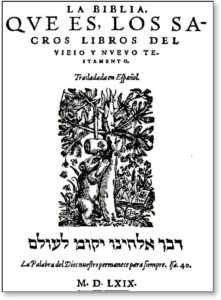
A few months ago, at age 97, one of the premier missionary anthropologists of the twentieth century passed on to glory, a death reported by journals and newspapers around the world. You might not know, however, that his dramatic story intersected our own – half a century earlier, in Bolivia.
Eugene Nida (1914-2011) was a charter member of Wycliffe Bible Translators, and later Executive Secretary for Translations for the American Bible Society. He authored many, many books throughout his long career – every one a durable classic: Message and Mission (1960), Customs, Culture and Christianity (1963), and The Theory and Practice of Translation (1969) are a few well-known examples.
Eugene Nida was best known, however, for the “dynamic equivalence” principle of Scripture translation – what has become the operational principle of every major translation agency in the world.
The idea is simple enough. Nida observed that word-by-word translations result in grammatical inconsistencies and errors in understanding. Phrase-by-phrase translations are only marginally better. He advocated Scripture translation idea by idea. The translator should work hard at unpacking the ideas conveyed by the original text of Scripture, and put the ideas into the language targeted for translation – without slavish concern for the number or sequence of original words or phrases. The meaning of the text is the issue of concern, after all. The translator should aim at a “dynamic equivalent” of original meanings in the language chosen for translation. This indeed was the effort that brought Nida to Bolivia.
When John Carlsen and Ernest Weinhardt arrived in Bolivia in 1938, they used and distributed the 1909 version of the famous Reina Valera Bible. But the version had many inconsistencies, making it awkward and ambiguous. Nida and the American Bible Society advocated a revision. They undertook the project in 1949, and traveled throughout Latin America to collect data and build a translation team. Throughout the next decade they worked on the revision. And in 1960, they presented the result – a new version of the Reina Valera that is widely used to this very day.
Occupied in this translation project, Nida arrived in La Paz in 1950 – just as our young Prayer League was looking for a new field of involvement elsewhere in Latin America. The Bolivia Mission Conference had commissioned Ray Rosales (1924-2000) to survey potential opportunities. It turns out that Ray knew Nida. He had studied under him at the University of Oklahoma. Knowing now that Nida was in town, Ray invited him for supper at the Mission Home in La Paz.
“During the conversation after the meal,” Ray later reported, “it came out that the Bolivia Mission Conference was considering the survey trip. [Nida’s] jovial expression changed, and pulling his chair toward me and leaning forward, he pled that I include the Quichua [people] of Ecuador in the survey.”?[1] Nida had just come from Ecuador. The Quichua people of the southern highlands, in his estimation, were among the least reached and most strategically significant people groups on the continent.
Ray went on to make his survey, from the pampas of Argentina to the jungles of Panama. He found many, many possibilities for involvement. But in the end he recommended Ecuador, proposed around the supper table by Eugene Nida.
We might say that Ray discovered the “dynamic equivalent” of Carlsen and Weinhardt’s pioneering effort, for our growing work in Latin America.
This is always the task of Christian mission. We don’t follow Jesus by walking in sandals or dressing in togas, after all. We don’t honor Weinhardt by riding on donkeys or making our home again in Mocomoco. Christian mission is about the translation of ideas and commitments – an allegiance to Jesus and a Christian worldview – in ever new settings, languages and contexts. Luther said that the gospel “wants to be taught and preached always and always, in order that it may always appear above the horizon.”?[2] The gospel message itself presses us outward, beyond the togas and the donkeys – and Mocomoco, too – to the next horizon of need. So it pressed Paul toward Spain (cf. Romans 15:24), Patrick to Ireland, Carey to India, Taylor to China, and Weinhardt and Carlsen to South America. But today it will press us farther.
And we don’t need Nida to pull up a chair to tell us. We have Jesus. And he has made the issue plain. He aims to make disciples of all the peoples of the world – precisely through people like you and me (Matthew 28:19). He has made us today the “dynamic equivalent” of all the disciple-makers gone before. And if we let him, he will point us again toward the horizon.
[2] WA 10 I, 1, 540, 12ff.